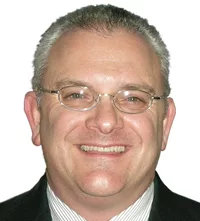Analog distribution — the full-service, many branches, many sellers model — is in trouble. As e-commerce and digitization of PHCP channels increases, the need for yesteryear’s complement of sellers and branches is lessened. This is evident in made-for-online firms as disparate as Zoro Tool (www.zoro.com) and Sustainable Supply (www.sustainablesupply.com). The combined firms have taken an estimated $530 million in sales out of PHCP/Industrial channels and their growth rates are phenomenal given the firms are, for all intents and purposes, less than a decade old. These firms, however, operate very differently than traditional full-service distributors.
Zoro Tool is a transactional distributor and the brain-child of WW Grainger. Zoro has five U.S. branches, limited sellers and greatly reduced prices. In essence, transactional distributors, using e-commerce and a low-cost infrastructure with few outlets and sellers, fund cost savings to the customer in the form of an attractive price.
Industry scuttle has it that Zoro Tool can reduce prices over the corporate parent, often substantially, and still return a higher ROS percent than Grainger, whose gross margin percentage bounces around in the high 30 percent to 40 percent range. Grainger recently rolled out Zoro to the UK where our bet is it will repeat its North American success.
Sustainable Supply is a Denver-based online corporation selling parts and products in the PHCP and associated sectors. A few years back, the company had $20 million in sales and the growth rate was, as listed on the Inc Magazine site, 116 percent over the previous three years. A rough forecast for 2018 would have the company with more than $30 million in sales. Sustainable works closely with manufacturers and drop-ships items to customers as well as stocking them. Its content and parts breakdowns are second to none and easily searched online.
It gives the online supplier a substantial advantage over full-service distributors who, generally, don’t like parts sales as the transaction sizes are small versus the range of SKUs stocked. Our guess is that as Sustainable secures more customers with parts sales, they’ll move upstream to larger transactions including finished equipment sales.
The success of these two companies did not come from sectors with rocket-trajectory growth rates. The overall annual growth rate of durable goods distributors is in line with the U.S. gross domestic product or around 2.5 percent. These distributors’ growth came from mostly traditional distributors who have dominated durable goods channels since their inception a century or more ago. Ergo, full-service distribution is an old model with a notable history where success has made it complacent and slow to change. But their sales are diminished by online models differing in structure, outlook and strategy from their full-service counterparts.
Across the roughly 50 differing product markets served by traditional distributors, we have found significant numbers of alternative models of distribution made for the digital age. These firms nearly always offer high growth and a unique service/product offering not found in brick-and-mortar, sales-intensive distribution. A 2017 study published in the Sloan Management Review (MIT) found that nontraditional or “online” firms comprised only 17 percent of all businesses but sold a phenomenal 47 percent of all online global sales.
Remember, most of these firms didn’t exist 10 to 15 years ago. It is likely they will grow their share at the expense of old-line firms who still struggle online, with upwards of half of B2B firms still not using e-commerce to any appreciable degree.
The Shrinking Pie of Traditional Distribution
Forward-looking distributors must come to terms with new-age online competitors and traditional competitors who succeed online. Our research in the distribution sector has found, since 2013, that 20 percent of traditional firms capture 80 percent of online demand. Looking at it another way, when we take the estimated $1 trillion in 2018 online sales for B2B markets, we find where made-for-online firms have $470 billion in sales, leaving “other” online sales of $530 billion.
Distributors have about $370 billion in sales and manufacturer-direct sales are $160 billion to round out that $530 billion. Of the distributors who have $360 billion in online sales, 20 percent of the firms have $296 billion and 80 percent have $68 billion or so. Additionally, our research finds that distribution firms selling more than 25 percent of total sales online (usually in the top 20 percent) are starting to expand their lead at the expense of the bottom 80 percent of firms.
Online sales grow at 8 percent, compounded annually. In 10 years, estimates are that upwards of one-third of all B2B sales will be online. If the future looks like the recent past, these sales will go to new-age online competitors and the 20 percent of distribution firms excelling in online sales.
Today, in a white-hot economy, it is difficult for distributors to notice any appreciable online loss or market share. The market is 1/7th or so built out, meaning that 13 percent to 14 percent of sales are online. Spreading this across many markets, regional distributors likely don’t see any appreciable loss. However, the documented performance of new-age competitors, Pareto distributors and numerous research projects find that online selling is for real and 80 percent of existing distributors aren’t doing it well. See Exhibit I for reference.
Staying in the Game
For distributors who want to stay in the game and grow sales, they will need to develop online capability and quickly. Without a good online presence, theirs is a shrinking market. To stay in the game, however, requires much more than simply building out online technology. We’ve covered the tech for many years and know it well enough to state that technology and online know-how are good and getting better but this is not the critical issue.
Our concern is that many distributors won’t go far enough to change the culture of the existing “analog” firm with the biggest change coming to the salesforce. Distributor salesforces have been under siege for many years as the use of sellers to secure orders was established at the inception of the business model. Recent research finds that customers don’t want to see or pay for sellers unless they offer tangible and incremental value.
A recent research project by Real Results Marketing of 10,000 distributor customers found that 15 percent of customers did not want to see a seller, 20 percent of customers only wanted to see a seller once a year and 30 percent of customers wanted to see a seller once per quarter. Contrast this with our 2018 research where the average full-service distributor has 25 percent to 35 percent of operating expenses in sales personnel and we find where most distributors have more sellers than the customer is willing to pay for in the digital age.
Financially, a $400 order at a common 25 percent margin or $100 GM and having $96 in operating expenses could easily have $24 to $34 in sales costs. In most distribution industries, these financials make little sense to the customer. Why? Most distributors sell the majority of their goods as commodities and customers often know the products better than the distributors and can easily buy them online. Why pay for a seller?
This logic, we believe, is increasingly part of the customer’s decision to buy online and secure a better price from a new-age firm or top online distributor. Hence, the need for restructuring the sales effort is real and distributors who stop at building out the tech of their online strategy will, over time, lose. Keeping a full complement of sales personnel and branches once the online capability is built out only adds cost to the channel where new-age competitors are taking cost out and offering a reduced price to market.
In this series, we’ll go through the decision logic of restructuring the sales effort for fictional Sioux Falls Supply, a powerhouse PHCP distributor, headquartered in South Dakota and covering the upper Midwest. We hope the series will add value to your efforts to compete online.






